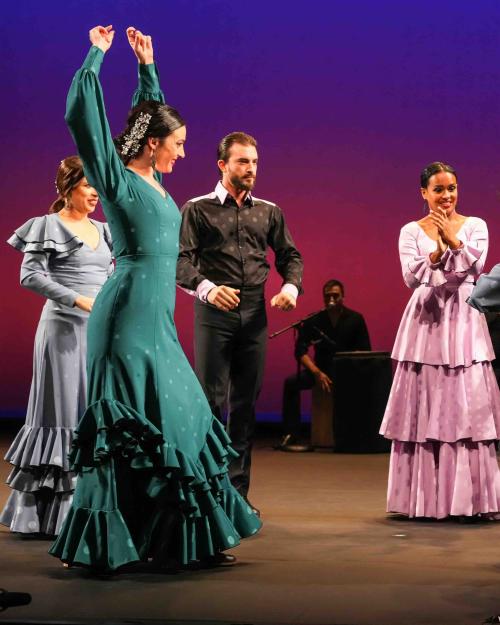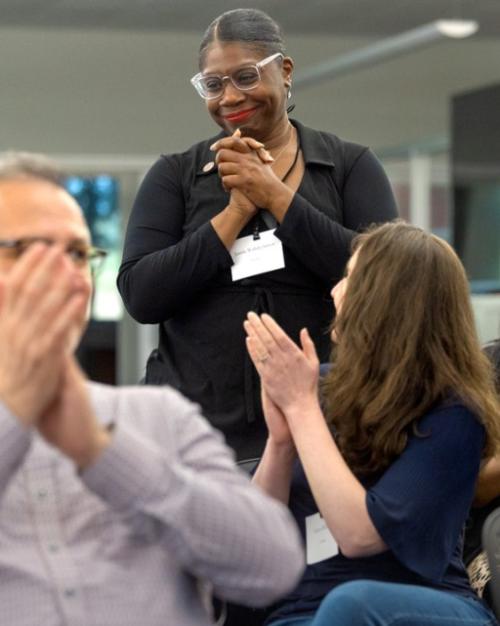As New Jersey drivers approach the George Washington Bridge to enter New York City, a digital sign flashes overhead with estimates of the delays on the upper and lower levels of the bridge. Most drivers choose the level with the shortest predicted wait. But a few savvy drivers choose the other level, expecting that the digital signs are lagging and that conditions will change by the time they arrive at the bridge.
“Most people are waiting averse, so they tend to choose the shorter line – but occasionally, they’ll choose the longer one,” said Jamol Pender, assistant professor in Cornell’s School of Operations Research and Information Engineering. “We really wanted to understand how delays in queue length or waiting time information affect the system dynamics, and so we developed a probabilistic way of calculating which line they will choose.”
In collaboration with Richard H. Rand, professor of mathematics and mechanical and aerospace engineering, and Elizabeth Wesson, visiting assistant professor of mathematics, Pender simulated probabilistic models that demonstrate that drivers obey digital signs that direct them toward less-congested routes. But if these signs do not update quickly enough to keep pace with the realities on the highway, drivers will continue to pile onto the suggested route long after it has reached critical mass, creating new and unexpected congestion. Worse, when these digital signs finally update, a wave of drivers will cram onto the other level – kicking off a vicious cycle of back-and-forth bridge traffic that can cripple a commute.
“As long as the discrepancy [between the digital sign and reality] is relatively minor, following the advice on the sign will continue to be the wisest decision,” Pender said. “But once the discrepancy reaches a critical threshold – once the information lag is large enough – you get these oscillations in queues.”
Their study, “Queues With Choice via Delay Differential Equations,” was published in the International Journal of Bifurcation and Chaos in December 2016. The researchers also submitted a follow-up paper earlier this week, which is now under review.
“It is one of the strengths of applied mathematics that the same mathematics occurs in models of completely different applications,” noted Rand. “So for example, the result we obtained in this work is mathematically known as a ‘Hopf Bifurcation,’ which is the same mathematics that describes such diverse phenomena as the shimmy of the front wheel of a motor cycle, the onset of arrhythmias in the beating of the human heart or oscillations in extreme weather due to El Nino.”
The interdisciplinary collaboration of the researchers was critical to the rigor and depth of both studies. “It’s been quite fruitful for all of us to work together, because this work combines queueing theory, techniques from applied math and fluid models from mechanical engineering,” Pender said. “This is one of the first papers that combines these techniques, and the result is something that is pretty amazing.”
The team based its initial analysis on two-dimensional deterministic fluid models, which simulate how individuals tend to travel as a group from one destination to another. They found that, when individuals are given up-to-date information about queue lengths, the system evens itself out and no oscillations occur. Just the right number of individuals travel from a congested area to an open one until the next update advises those who have not yet migrated to stay put. But when individuals are given information with a significant lag, the system crumbles. As they flee the congested area in favor of the open one, individuals find it gradually becoming even more crowded than the first. When the information finally updates, the group rushes back in the other direction creating wild oscillations in the system.
In their forthcoming study, the researchers expand this model to include multiple destinations, and they observe similar patterns of oscillation in the queues.
The study could have important implications for several types of queueing behavior – from predicting line lengths for amusement park rides, to sussing out hospital wait times for emergency room visits. Pender notes that the managers of these systems would benefit from keeping their estimated wait times precisely updated. Otherwise too many individuals could rush an ER as soon as its estimated wait drops to zero, or end up flitting between two rollercoaster queues that never seem to get any shorter.
As for the driver, patient or park-goer, Pender’s advice is simple: “Every time I go on the bridge, I do the opposite of whatever it tells me to do. It’s how I have always lived my life. If everyone is going the same way, try something new.”
A version of this article appeared in the Cornell Chronicle.




